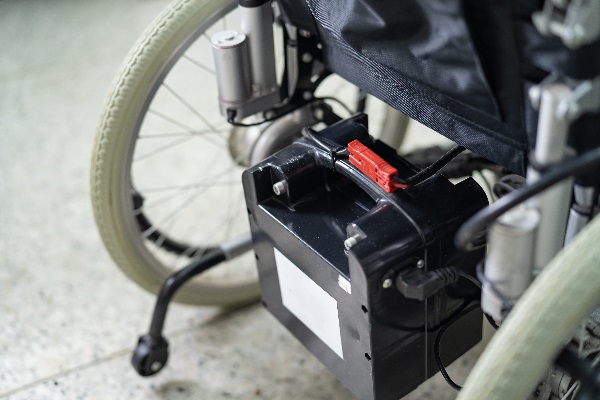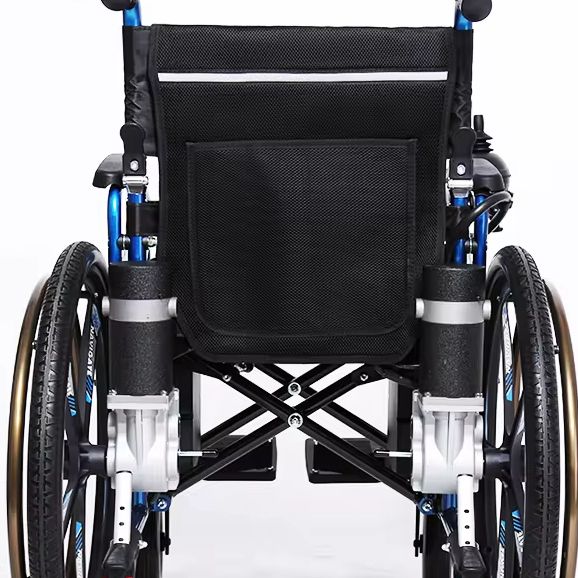
Why you should care about the electric wheelchair batteries
In this article you’re gonna find out some useful tips about how to choose the electric wheelchair batteries that you may not have known before.
Ageally believes that Electric wheelchairs are super important for improving the quality of life for people who have trouble moving around. These devices aren’t just for getting from one place to another, they’re like magic tools that give independence and let you take part in everyday activities. For folks with limited mobility, electric wheelchairs mean freedom, control, and the ability to be a part of the world on their own terms.
Did you happen to find that? There’s a big problem when it comes to how long the electric wheelchair battery lasts and how far you can go. This is a really big deal because it can stop wheelchair users from finishing important tasks or going out with friends because they’re scared of running out of power halfway through. It’s so frustrating and stressful that it makes their lives way less enjoyable.
Battery Types of Electric Wheelchairs
Electric wheelchair batteries come in two main types: sealed lead-acid batteries and lithium-ion batteries. Each type has its own characteristics, advantages, and drawbacks.
Sealed lead-acid batteries
Sealed lead-acid batteries, also known as SLA batteries, have traditionally been the go-to choice for electric wheelchairs. They are known for being relatively inexpensive compared to lithium-ion batteries.
SLA batteries are strong and durable, making them suitable for heavy-duty use. However, they are larger and heavier than lithium-ion batteries, which can affect the overall weight and maneuverability of the wheelchair.
Additionally, SLA batteries have a limited capacity and lifespan compared to lithium-ion ones, requiring more frequent replacements and maintenance.
Lithium-ion batteries
On the other hand, lithium-ion batteries offer several distinct advantages over SLA ones. They are lightweight and compact, making them perfect for electric wheelchairs where space and weight are important factors to consider. Lithium-ion batteries also have a higher energy density, meaning they can store more energy in a smaller size battery pack resulting in longer range and improved performance.
Moreover, lithium-ion batteries have a longer lifespan and can endure a higher number of charge-discharge cycles compared to SLA batteries. However,the benefits do come at an increased cost since manufacturing lithium- ion batteries is generally more expensive than SLA batteries.

Common Specifications for Electric Wheelchair Batteries
1. Voltage of batteries
– Sealed Lead Acid Batteries (SLA):
12V voltage, usually with different capacities available, such as 12Ah, 18Ah, 22Ah, 35Ah, etc.
– Lithium ion batteries (Li ion):
24V or 36V voltage, usually with different capacities available, such as 6Ah,10Ah, 15Ah, 20Ah, 25Ah, etc.
The specifications mentioned are pretty standard, but there are other options available too. The specific battery specifications for electric wheelchairs may vary depending on the manufacturer and model of the product.

2. Endurance Different Wheelchairs
The endurance of electric wheelchairs can vary depending on factors like the model, battery capacity, vehicle efficiency, driving speed, terrain, and user weight.
Generally speaking, most electric wheelchairs have a range between 10 and 25 miles. However, the specific range may differ based on the manufacturer and model of the wheelchair.
Here are some common ranges for different types of electric wheelchairs:
– Standard electric wheelchair:
These typically have a range of around 10 to 15 miles and are suitable for indoor use or short distances outdoors.
– High-performance electric wheelchairs:
Some high-end or professional models can offer longer ranges up to 20 to 25 miles or even more. These wheelchairs usually come with larger batteries and more efficient motors, making them ideal for long-distance outdoor use.
– Folding electric wheelchairs:
Although folding electric wheelchairs generally have shorter ranges (around 10 to 15 miles), their portability and ease of storage make them perfect for travel or short-distance trips.

Factors that Affect Battery Capacity and Endurance
Electric wheelchairs rely heavily on their batteries to provide the necessary power for mobility.
Battery capacity, measured in ampere-hours (Ah), indicates the amount of energy a battery can store. In the context of electric wheelchairs, higher battery capacity typically translates to longer range.
This is because a larger capacity allows the wheelchair to draw power for a more extended period before requiring recharging. For example, a wheelchair with a higher-capacity battery may be able to travel 20 miles on a single charge, while a wheelchair with a lower-capacity battery may only manage 10 miles.
However, battery capacity is just one piece of the puzzle when it comes to range. Several other factors can influence the wheelchair’s ability to travel a certain distance on a single charge. One such factor is driving speed. Higher speeds require more energy, leading to faster depletion of the battery.
Additionally, user weight can significantly impact range. Heavier users put more strain on the wheelchair’s motor, causing it to consume more power and reducing overall range. Conversely, lighter users may experience slightly longer range due to reduced energy requirements.
By understanding how these variables interact, users can make informed decisions when selecting a wheelchair and maximize their mobility and independence.
Battery charging and maintenance
1. Electric wheelchair Battery Charging
Electric wheelchair batteries are like the lifeblood for people who rely on these devices to get around every day. It’s super important to charge and take care of these batteries properly so they work their best and last a long time.
First of all, let’s check out how electric wheelchair batteries are charged. When it comes to charging, it’s super important to follow the manufacturer’s guidelines so we don’t mess up the batteries or the wheelchair itself. Usually, we charge electric wheelchair batteries using a regular charger that plugs into a power outlet.
The time it takes to charge can vary depending on things like battery capacity and how much charge is left.
Normally, the charging time is different based on battery types:
- Lead-acid batteries:Take approximately 8 to 14 hours to fully charge.
- Lithium-ion batteries:Charge much faster, typically in 2 to 6 hours.

2. Electric wheelchair Maintenance
Besides proper charging, taking care of electric wheelchair batteries is crucial for making them last longer and perform reliably. Here are some tips for maintenance:
- Regular Charging: Make sure to charge the wheelchair batteries regularly, even if they’re not completely drained. It’s better to partially discharge them and then recharge rather than letting them fully discharge, as that can reduce the battery lifespan over time.
- Avoid Deep Discharge: Deep discharges, where the battery is drained almost completely, should be avoided whenever possible. Deep discharges can cause irreversible damage to the batteries and significantly reduce their lifespan.
- Avoid Overcharging: Overcharging occurs when batteries are left connected to the charger for an extended period beyond the recommended charging time. This can lead to overheating and damage to the batteries. It’s essential to disconnect the charger once the batteries are fully charged to prevent overcharging.
- Regular Inspection:Inspect the batteries and charger regularly for any signs of damage or wear. Make sure to check for corrosion on the battery terminals, loose connections, or any strange smells while charging. If you notice any problems, reach out to the manufacturer or a qualified technician for help.
By following these maintenance practices, users can make sure that their electric wheelchair batteries stay in great condition, giving reliable performance and a longer lifespan.
Methods to improve battery life
1. Making better batteries
One way to improve the range is by making better batteries. Manufacturers are always working on developing batteries that can store more energy and perform better, so electric wheelchairs can go longer distances without needing to be charged as often. For example, lithium-ion batteries have higher energy storage compared to traditional sealed lead-acid batteries, which means they can make the wheelchair travel farther and work more efficiently.
2. Improving the motors
Another method to increase the range is by improving how well the motor of the electric wheelchair works. By designing a motor that works optimally and reducing any unnecessary friction, manufacturers can make the wheelchair overall more efficient. This allows it to travel further using the same amount of power.
High-efficiency motors, advanced motor controllers, and regenerative braking systems that capture and store energy during slowing down are some ways this can be achieved.
Ageally understands the importance of meeting diverse needs when it comes to electric wheelchairs. That’s why we offer a range of models equipped with high-power motors ranging from 180W to 250W. Whether you require more power for outdoor adventures or prefer a smoother ride indoors, our selection ensures that you can find an electric wheelchair tailored specifically to your requirements.
3. Making the electric wheelchair lighter
Furthermore, making the electric wheelchair lighter can help it go further. We can use lightweight materials like aluminum and carbon fiber to build the frame and components of the wheelchair, reducing its overall weight without sacrificing strength or durability. This decrease in weight lowers the amount of energy needed to move the wheelchair, resulting in a longer range and improved efficiency.
4. Adding smart features
Additionally, incorporating smart features into electric wheelchairs can enhance their efficiency and extend their range. For example, intelligent power management systems can monitor and regulate power usage based on user behavior and environmental conditions. This ensures that power is allocated efficiently, maximizing the distance that can be traveled on a single charge.
5. Advancing regenerative braking technology
Moreover, advancements in regenerative braking technology play a crucial role in increasing range. When an electric wheelchair slows down or stops, regenerative braking systems capture and convert kinetic energy into electrical energy that is then stored back into the battery. This reclaimed energy can be used later when accelerating or climbing inclines, effectively extending the range of the wheelchair.
In the future, as battery technology advances and electric wheelchairs become smarter, we can expect more innovation and progress. This means longer range, more efficient energy use, and a comfier mobile experience for users.
Ageally specializes in providing electric wheelchairs for years and is continuously developing the wheelchairs with the latest technology. Reached out now and get the latest information!






